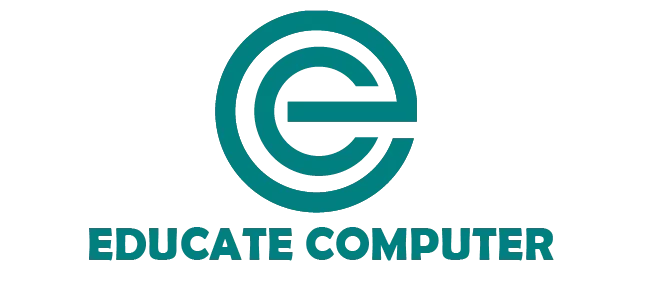Computers are transforming the way we travel and manage transportation systems. They make processes faster, safer, and more efficient. From managing routes to controlling traffic, computers are used in many ways to improve transportation systems. Let’s look at the uses of computers in transportation below:
- Uses of Computers in Transportation
- 1. Route Planning and Optimization
- 2. Traffic Management Systems
- 3. Vehicle Navigation (GPS)
- 4. Ticketing and Reservation Systems
- 5. Fleet Management
- 6. Automated Toll Collection
- 7. Safety Monitoring
- 8. Traffic Violation Detection
- 9. Autonomous Vehicles
- 10. Weather Forecasting for Transport Planning
- 11. Inventory and Cargo Management
- 12. Maintenance Scheduling
- 13. Passenger Information Systems
- 14. Railway Signal Systems
- 15. Fuel Efficiency Monitoring
Uses of Computers in Transportation
The following are the Common uses of computers in Transportation:

1. Route Planning and Optimization
Computers in transportation are widely used to plan routes for vehicles. The software analyzes road conditions, traffic data, and distance to find the best possible path. This helps drivers avoid traffic jams and reduces travel time.
For example, delivery services use route optimization to complete multiple deliveries efficiently. By minimizing unnecessary travel, computers also help save fuel and reduce costs.
2. Traffic Management Systems
Modern traffic management systems rely on computers to monitor and control traffic flow. Cameras and sensors placed on roads collect real-time data. Computers process this data to detect congestion and adjust traffic signals accordingly.
For example, during peak hours, they can increase the green light duration on busy roads. This ensures smoother traffic flow and reduces delays.
3. Vehicle Navigation (GPS)
Global Positioning System (GPS) technology uses computers to guide drivers. GPS devices provide accurate directions and update routes based on current traffic conditions.
They also notify drivers of alternative routes to avoid accidents or road closures. This not only saves time but also reduces stress for drivers by providing reliable navigation.
4. Ticketing and Reservation Systems
Public transport, airlines, and railways use computers for ticketing and reservations. Passengers can book tickets online and choose their preferred seats. These systems handle large amounts of data to ensure accuracy and prevent overbooking.
For example, when you book a flight, the computer system instantly checks seat availability and confirms your reservation. This makes travel planning easy and hassle-free.
5. Fleet Management
Transportation companies use computers to manage their fleets. Computers track the real-time location of vehicles using GPS. They also monitor fuel consumption, driver behavior, and delivery schedules. This helps businesses optimize their operations and reduce costs.
For example, logistics companies use fleet management systems to ensure timely deliveries and avoid delays.
6. Automated Toll Collection
Computers enable automated toll systems. Drivers pass through toll booths without stopping, and payments are made automatically using RFID tags or digital payment methods. Computers record the details of each vehicle, including payment status. This reduces waiting times and prevents traffic buildup at toll points.
7. Safety Monitoring
Modern vehicles are equipped with onboard computers to monitor safety. These systems check engine performance, tire pressure, and brake conditions. If any issue arises, the computer alerts the driver immediately.
For example, a car’s safety system might warn the driver about low tire pressure or malfunctioning brakes. This helps prevent accidents and ensures safer travel.
8. Traffic Violation Detection
Traffic cameras are controlled by computers. They detect violations such as speeding or running red lights. Computers process the images and issue fines automatically.
For example, if a car exceeds the speed limit, the camera captures its license plate, and the computer processes the violation. This helps maintain road safety and discipline.
9. Autonomous Vehicles
Self-driving cars and drones rely on advanced computer systems. They use artificial intelligence to navigate roads and avoid obstacles.
Computers process data from sensors, cameras, and GPS to operate without human intervention. Autonomous vehicles represent the future of transportation. It offers safer and more efficient travel options.
10. Weather Forecasting for Transport Planning
Computers analyze weather data to help plan transportation schedules. Airlines use weather forecasting systems to avoid turbulence while shipping companies use them to prevent delays caused by storms.
For example, if bad weather is predicted, flights and ships can adjust their routes to ensure safety. Accurate weather data helps protect passengers and cargo.
11. Inventory and Cargo Management
Computers play an important role in managing cargo and inventory in the transportation industry. Logistics companies use software to track shipments from origin to destination. Computers ensure that goods are loaded correctly and delivered on time.
For example, a shipping company can use inventory management systems to avoid overloading a truck and ensure timely deliveries.
12. Maintenance Scheduling
Computers help transportation companies schedule vehicle maintenance. They monitor engine performance, mileage, and wear-and-tear on parts. If a vehicle requires servicing, the computer system notifies the operator.
For example, buses and trucks can use maintenance scheduling systems to avoid unexpected breakdowns. This ensures vehicles remain in good condition and reduces repair costs.
13. Passenger Information Systems
Passenger information systems provide real-time updates to passengers. Screens at bus stops, train stations, and airports display schedules, delays, and platform changes.
For example, an airport might use a passenger information system to update travelers about flight delays. Computers ensure passengers stay informed.
14. Railway Signal Systems
Railway signals are controlled by computers. Computers monitor track conditions and adjust signals to prevent collisions.
For example, if two trains are approaching the same track, the computer system will stop one train to avoid an accident. These systems improve the safety and efficiency of railway operations.
15. Fuel Efficiency Monitoring
Onboard computers in vehicles analyze fuel consumption. They calculate the distance travelled and suggest ways to improve fuel efficiency.
For example, a truck’s computer system might recommend reducing speed to save fuel. This helps transportation companies reduce costs and minimize their environmental impact.
Also Read:


